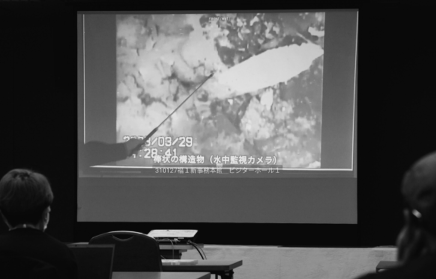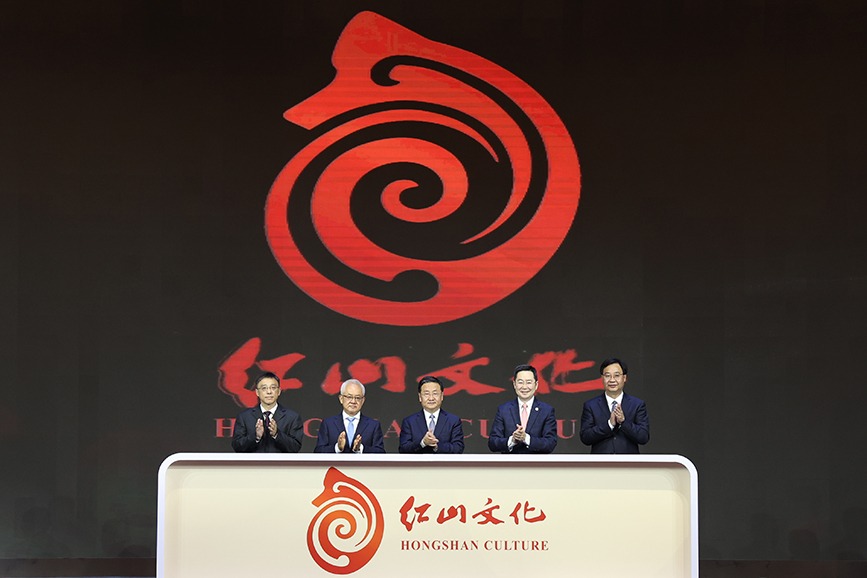Images from Fukushima reactor spark concerns

TOKYO — Images captured by a robotic probe inside one of the three melted reactors at Japan's wrecked Fukushima nuclear power plant showed exposed steel bars in the main supporting structure and parts of its thick external concrete wall missing, triggering concerns about its earthquake resistance capacity, as locals have long been living in fear of nuclear disaster.
The plant's operator, Tokyo Electric Power Company Holdings, or TEPCO, has been sending robotic probes inside the Unit 1 primary containment chamber since last year. The new findings, released on Tuesday, were from the latest probe conducted at the end of March.
The probe found the concrete wall missing in over half of the pedestal measuring 5 meters in internal diameter, leaving the reinforcing bar exposed.
The video taken by the robot also showed equipment that slipped down as well as other types of debris, possibly nuclear fuel that fell from the core and hardened, piling up as high as 40-50 centimeters from the bottom of the primary containment chamber.
TEPCO said the entire circumference of the foundation was highly likely to be damaged, adding that it would further analyze the footage and assess the seismic resistance of the pedestal.
Struck by a magnitude-9 earthquake and ensuing tsunami that hit Japan's northeast on March 11,2011, three nuclear reactors at the Fukushima plant suffered core meltdowns, resulting in a nuclear accident.
Consequently, about 880 metric tons of highly radioactive melted nuclear fuel remain inside the three reactors. Robotic probes have provided some information, but the status of the melted debris is still largely unknown.
The images of the exposed steel reinforcement have triggered concerns about the reactor's safety.
Fukushima Governor Masao Uchibori urged TEPCO to "swiftly evaluate levels of earthquake resistance and provide information in a way prefectural residents can easily understand and relieve the concern of the residents and people around the country".
Last year, Waseda University and a citizens' group sent questionnaires to 5,350 households mainly in the Kanto region around Tokyo who had fled from Fukushima following the nuclear disaster, finding that 37 percent of the evacuees may be suffering from post-traumatic stress disorder, or PTSD.
Lingering nightmares
Memories of the earthquake, tsunami and nuclear disaster, drastic changes in living environments and problems resulting from the government's post-disaster measures have been lingering nightmares in those people's minds, Japan's Asahi Shimbun reported on Monday.
Meanwhile, 34.5 percent said they "still have no job". As for reasons, 16.3 percent cited an "inability to resume my self-owned business yet", and 14 percent said they "could not work due to illness".
The survey also revealed the worsening financial situation of evacuees, as 56.8 percent said they were "worried about compensation and indemnification".
Another problem is the growing feeling of isolation.
"Although victims remain in touch with one another, some of them cannot go out on their own," said Takuya Tsujiuchi, a medical professor at Waseda University, who was involved in the research. "Such shut-ins alongside depressed individuals and elderly people need personal visits by supporters."
Agencies - Xinhua

Today's Top News
- More in region are seeking to learn Chinese
- Event hails Hongshan culture’s 'brilliance'
- Summit eyes closer, broader cooperation
- China-Central Asia summit will inject new vitality into community with a shared future
- Top political advisor stresses jointly guarding Taiwan Strait peace
- China, Central Asia witness deepened economic, trade ties
Most Viewed
- 2025 World AI Conference kicks off in Shanghai
- Abbot Shi Yongxin under investigation for alleged criminal offenses: Shaolin Temple
- Black people flee US in disgust with racism
- China's Village Super League resumes after floods
- Abbot Shi Yongxin under investigation for alleged criminal offenses: Shaolin Temple






























